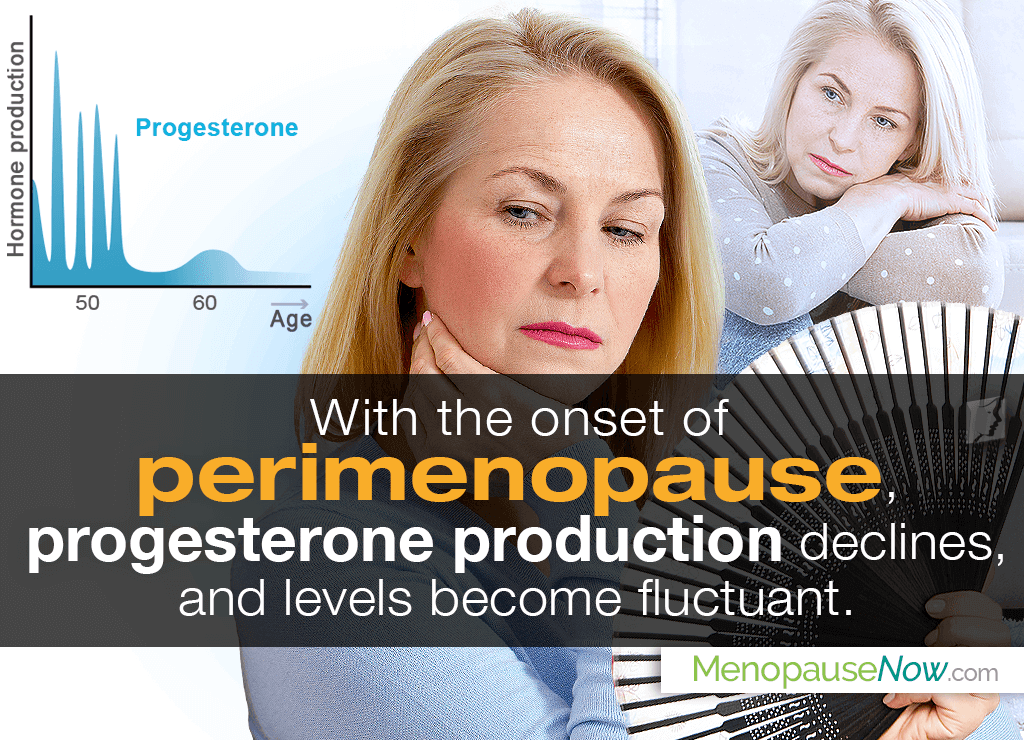As women end their reproductive years, progesterone production wanes, presenting new complications if not addressed promptly. Continue reading about low progesterone during perimenopause, including what that means for you and how you can increase levels for optimal health far into your postmenopausal years.
The Importance of Progesterone
Progesterone not only promotes the overall wellness of the reproductive tract, but it also contributes to the healthy functioning of other bodily systems, like the cardiovascular and musculoskeletal systems as well as the brain.
As a matter of fact, progesterone has been scientifically found to prevent bone loss in pre- and, possibly, perimenopausal women.1
As long as the body is healthy, and women present no hormonal disorders, such as PCOS or endometriosis, the hormone will continue its widespread contributions to overall female well-being.
How Progesterone Production Changes
The principal producers of progesterone during reproductive years are the adrenal glands as well as the ovarian corpus luteum.
The adrenal glands secrete the hormone during the first half of the menstrual cycle - called the follicular phase - before ovulation. Then, during the second half of the cycle - called the luteal phase - after ovulation occurs, the remnants of the follicle, known as the corpus luteum, produce progesterone.
However, once women's ovaries start to run out of eggs with the onset of perimenopause, progesterone production declines, and levels become more sporadic, especially with the onset of irregular periods.
Anovulatory cycles - during which no ovulation occurs - are recipe for insufficient progesterone production as most of the hormone is produced thanks to the releasing of the egg mid-cycle. irregular periods
Symptoms of Low Progesterone during Perimenopause
Aside from irregular periods, there are a plethora of symptoms that can indicate insufficient progesterone levels in women entering the menopausal transition, including:
- Hot flashes
- Loss of libido
- Depression
- Anxiety
- Night sweats
- Sleeplessness
- And more
If any of these symptoms are experienced, it is best to pursue the appropriate diagnostic testing to pinpoint the exact cause.
How to Raise Progesterone Levels
Increasing progesterone to allay symptoms is generally done through hormone replacement therapy (HRT), which can include the use of progesterone creams, pills, or patches.
However, women are turning to the help of less risky alternatives in place of pharmaceutical options in order to find relief and long-lasting hormonal balance.
Some natural methods to increase low progesterone during the menopause transition include:
- Enriching one's diet with foods that have vitamins B, C, and zinc
- Exercising regularly to improve overall endocrine health
- Practicing wholesome habits that include addiction control
- Complementing these measures with alternative medicines
Remember to work with your healthcare practitioner throughout treatment to find the best combination of approaches that work for you.
Key Takeaways
Progesterone's effects are wide-reaching throughout women's lives, influencing more than just the reproductive tract for years upon years. As such, when their reproductive years start to make an exit, and progesterone production begins to decline, it is essential that women instill necessary measures to alleviate symptoms - hot flashes, night sweats, low libido, etc. - and promote overall endocrine health. With proper initiative and a will to live symptom-free, hormonal balance for optimal well-being is right around the corner.
Sources
- Gottfried, S. (2013). The Hormone Cure. New York: Scribner.
- Society for Endocrinology. (2018). Progesterone. Retrieved October 22, 2019, from https://www.yourhormones.info/hormones/progesterone/
- Thomas, P. & Pang, Y. (2013). Protective actions of progesterone in the cardiovascular system: potential role of membrane progesterone receptors (mPRs) in mediating rapid effects. Steroids, 78(6), 583-588. doi: 10.1016/j.steroids.2013.01.003
- Women in Balance Institute: National University of Natural Medicine. (n.d.). Progesterone and the Nervous System/Brain | Progesterone & Cardiovascular Health. Retrieved October 22, 2019, from https://womeninbalance.org/resources-research/progesterone-and-the-nervous-systembrain/ | https://womeninbalance.org/resources-research/progesterone-cardiovascular-health/
Footnotes:
- Seifert-Klauss, V. & Prior, J.C. (2010). Progesterone and Bone: Actions Promoting Bone Health in Women. Journal of Osteoporosis, 2010: 845180. doi: 10.4061/2010/845180




